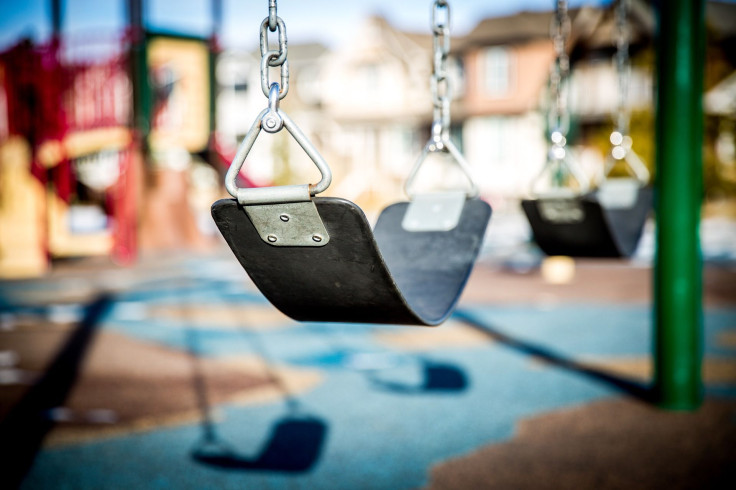Monkey Bar Mayhem: CDC Warns Playground Traumatic Brain Injury Among Children Is On The Rise

Thinking back to elementary school, many may have fond memories of running out onto the playground during recess or on the weekend with their parents in tow. But according to a recent study, published in the journal Pediatrics, parents may not know the extent of injuries lurking on the jungle gym. The new body of research conducted by the Centers for Disease Control and Prevention reveals playground concussions are on the rise and monkey bars and swings are what send most children to the emergency room.
For the study, the CDC reviewed data collected from 2001 to 2013 on kids 14 years old and younger who were sent to the emergency room because of playground injuries. They found that on average roughly 21,000 kids experienced a traumatic brain injury (TBI), including concussions. While all injuries the CDC tracked were nonfatal, 3 percent of the kids with concussions were hospitalized or transferred from the ER to a specialist or additional treatment center.
Researchers found the number of kids sent to the ER on account of TBI more than doubled between 2005 and 2013. They tracked the trends and found that in 2005, 23 of 100,000 kids had experienced a TBI on the playground. By 2013, the number jumped to 30,000 a year.
So which playground equipment caused the most injury? According to the findings, monkey bars and swings were the most common cause of concussions. But researchers point out it’s difficult to tell if the exponential rise is due to kids incurring more injuries or if more parents are more attentive about bringing their kids to the ER when an injury occurs.
A large majority of concussions and TBIs are not life-threatening; however, even a mild injury can leave a child with lifelong effects. The brain is made up of soft tissue, which is cushioned by spinal fluid and protected by the skull’s hard casing. When a child falls down from the monkey bars or jumps off a swing the wrong way, the brain can bang against the inner walls of the skull, causing the nerves inside the brain to become injured. According to the Mayo Clinic, the signs a child has undergone a concussion can be subtle and may not appear right away, but they'll still last for days, weeks, or longer.
Concussion symptoms often cause headaches, pressure in the head, temporary loss of consciousness, confusion, dizziness, amnesia, ringing in the ears, nausea, vomiting, slurred speech, delayed reaction time, and fatigue. Delayed symptoms can arise in the form of concentration and memory complaints, irritability, sensitivity to light and noise, difficulty sleeping, and depression.
Across the country, half a million children are sent to the ER every year because of a TBI. Weill Cornell Medical College’s Concussion and Brain Injury Clinic warns that recognizing concussion in children can be more complicated than diagnosing it in adults because a child may not be capable of effectively communicating their symptoms. Yet, CDC’s new findings may indicate concussion awareness has led parents to become more proactive when a child bumps his or her head.
Source: Coronado VG, Cheng TA, Bell JM, Haileyesus T, Gilchrist J and Sugerman DE. Nonfatal Playground-Related Traumatic Brain Injuries Among Children, 2001-2013. Pediatrics. 2016.



























